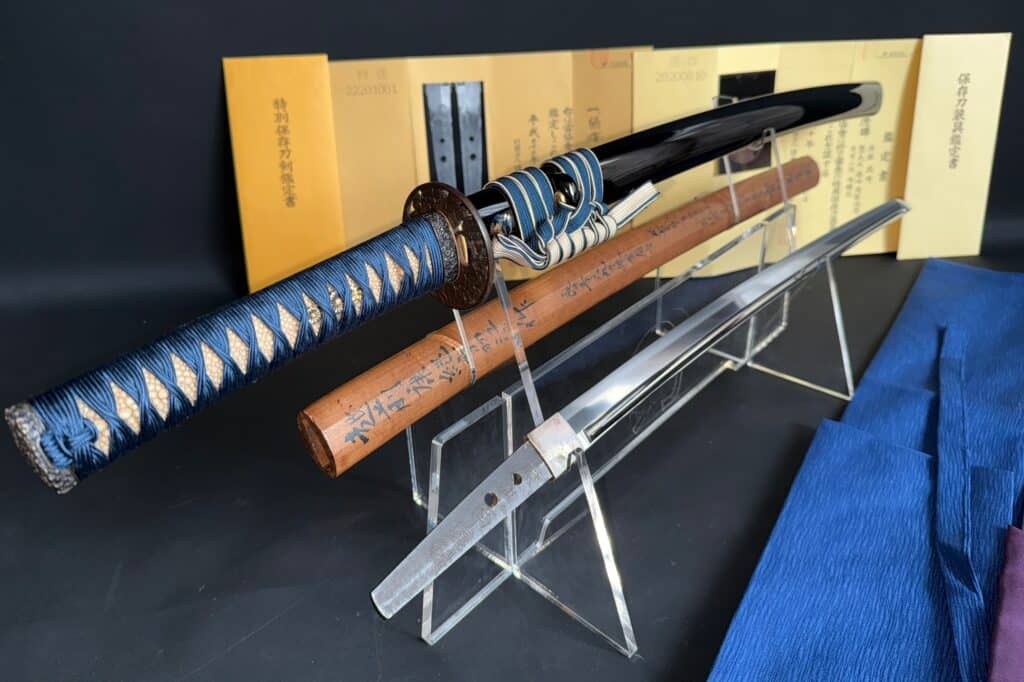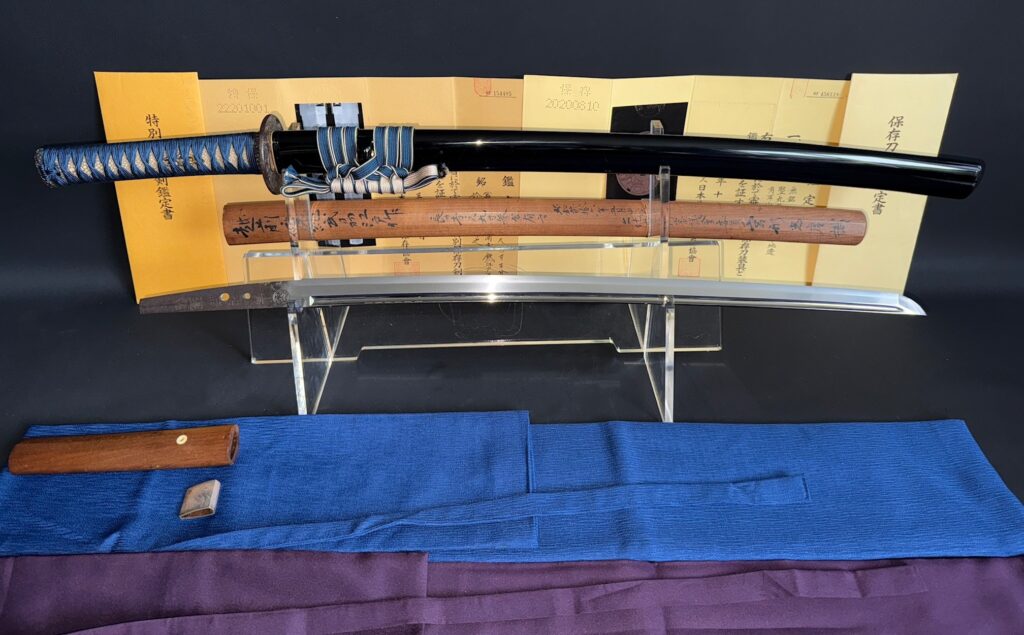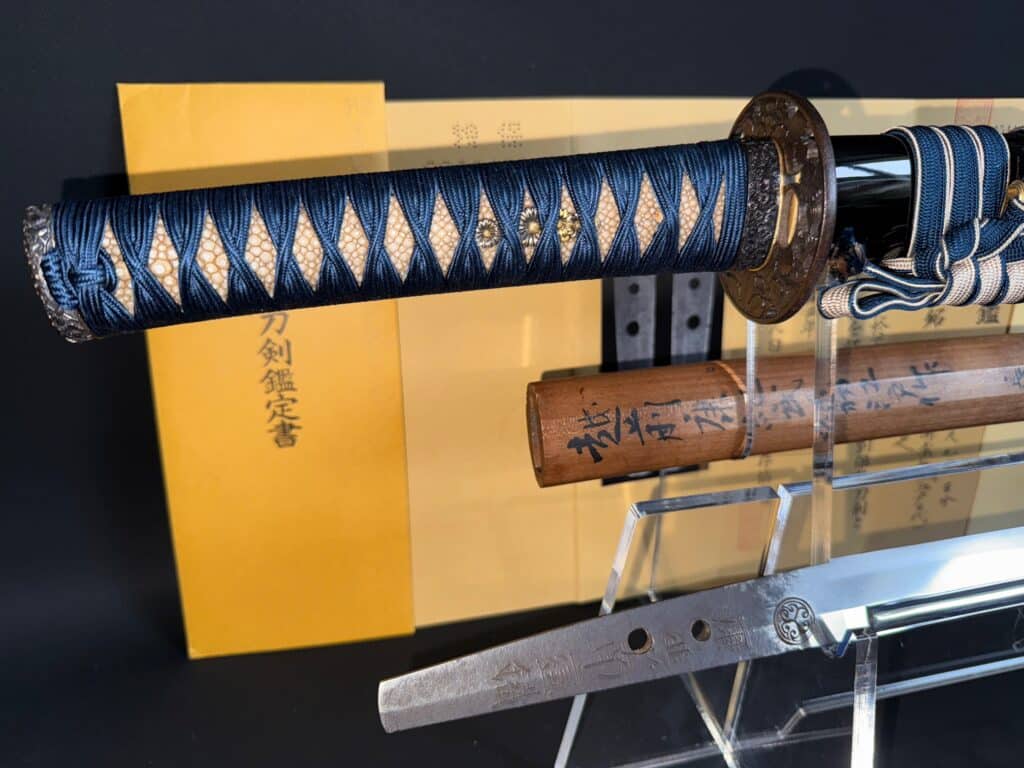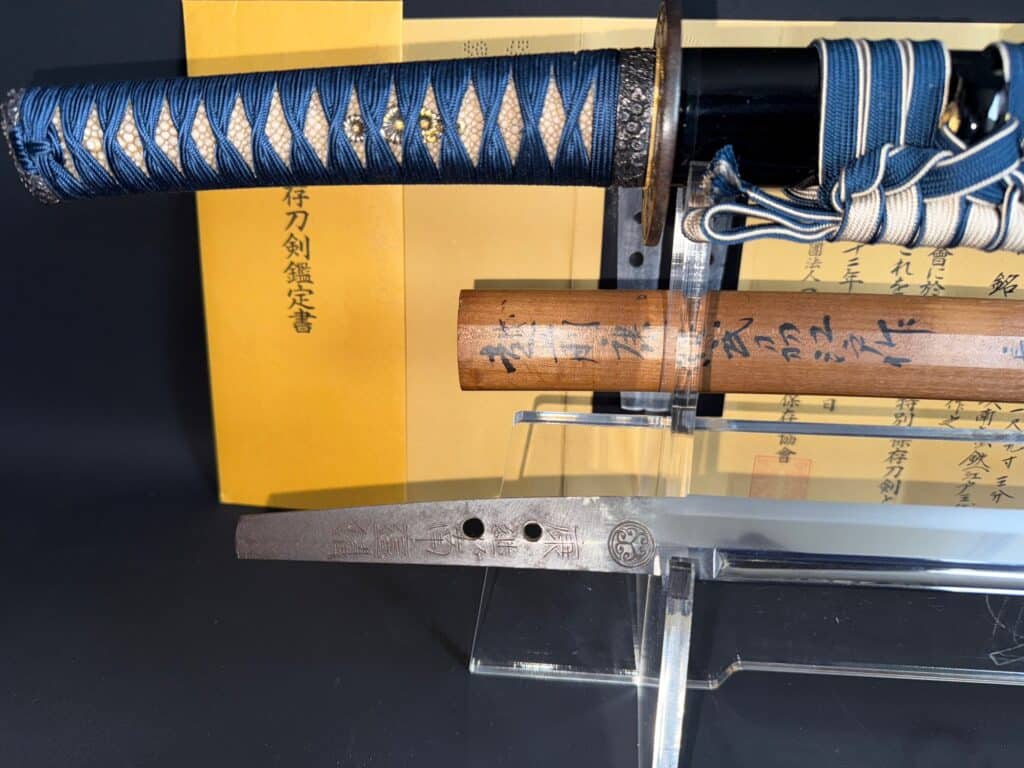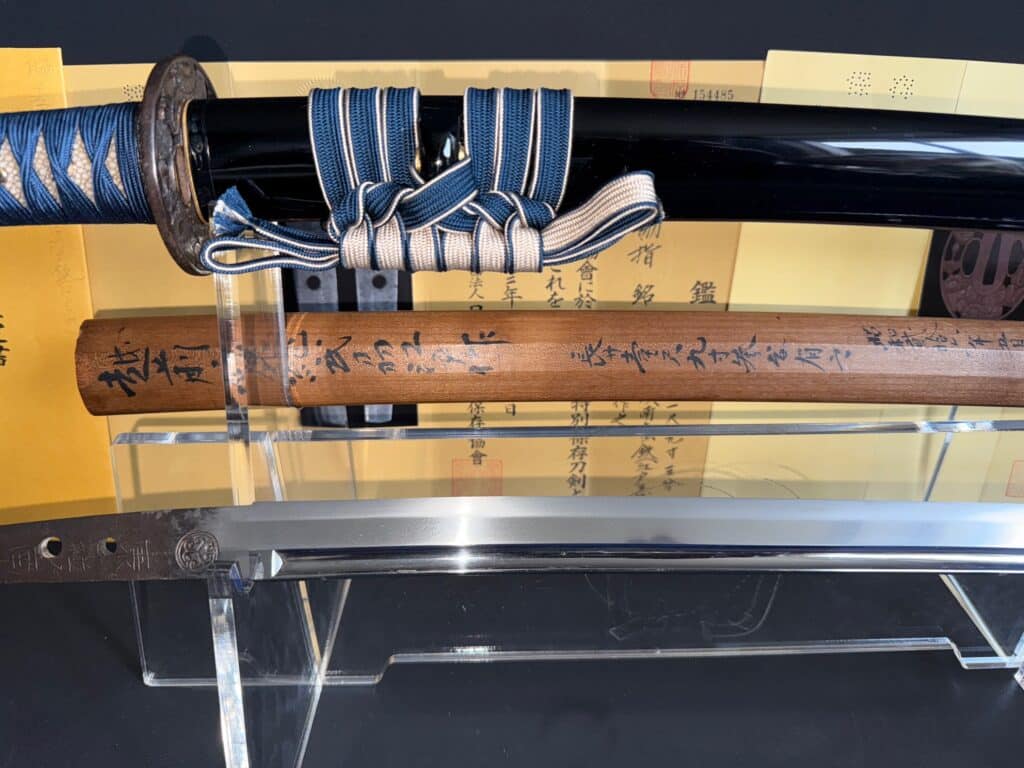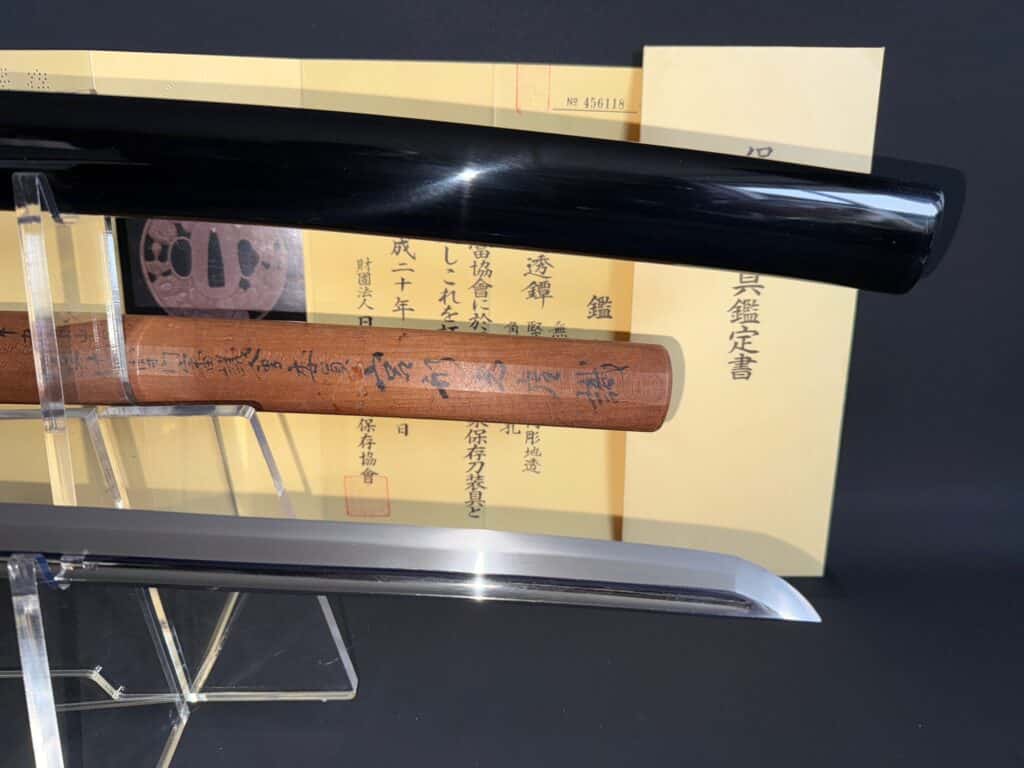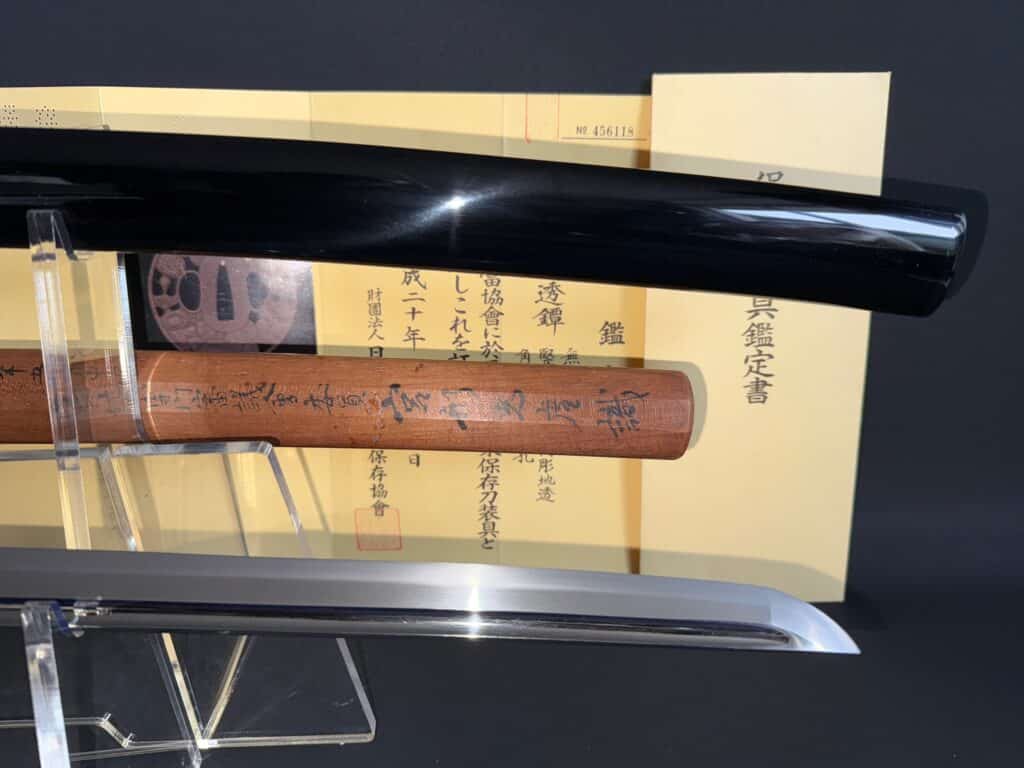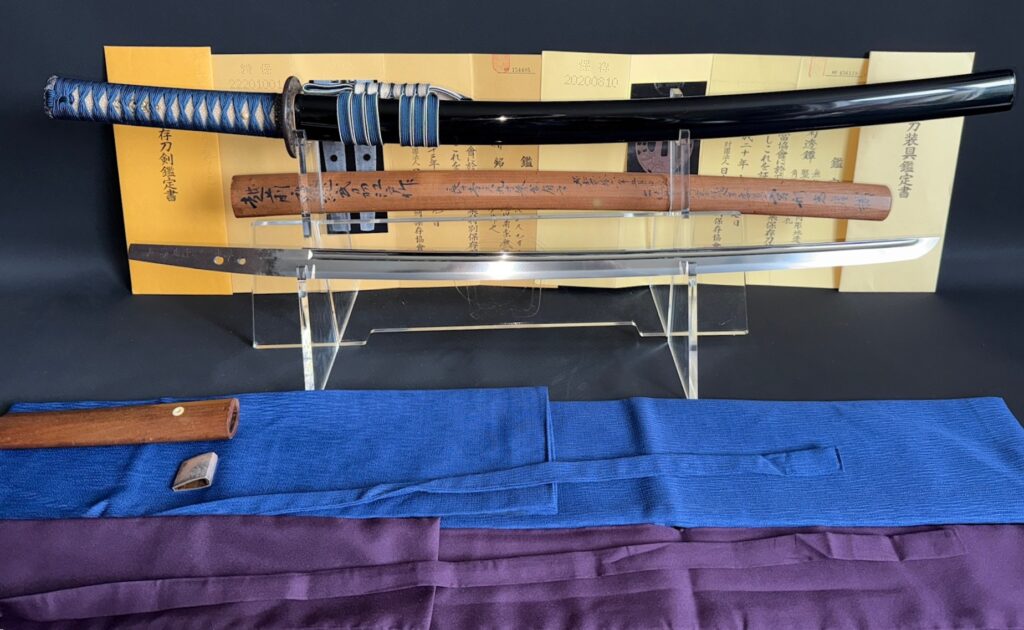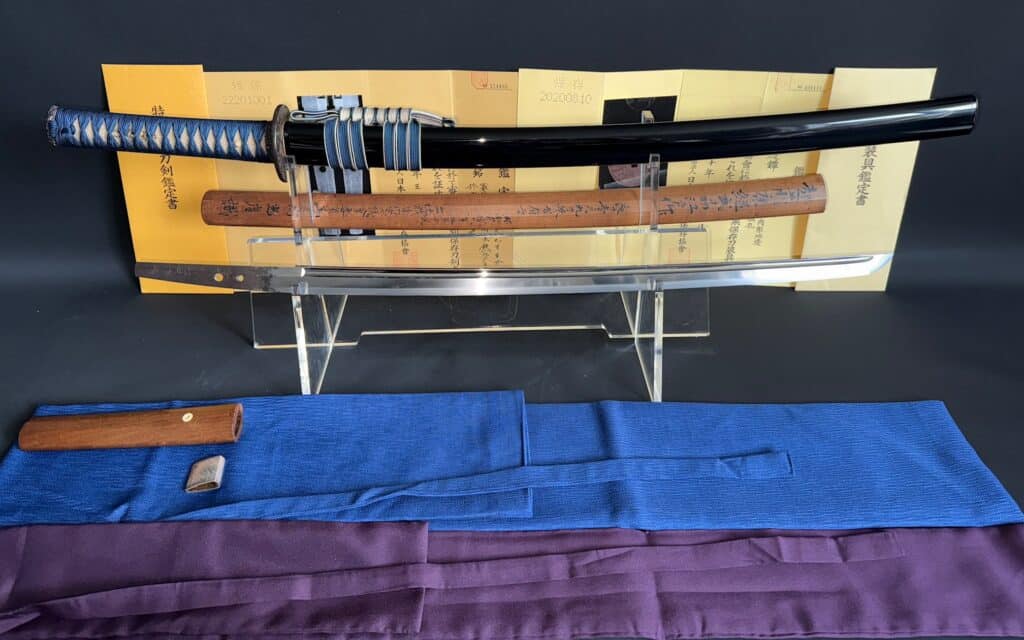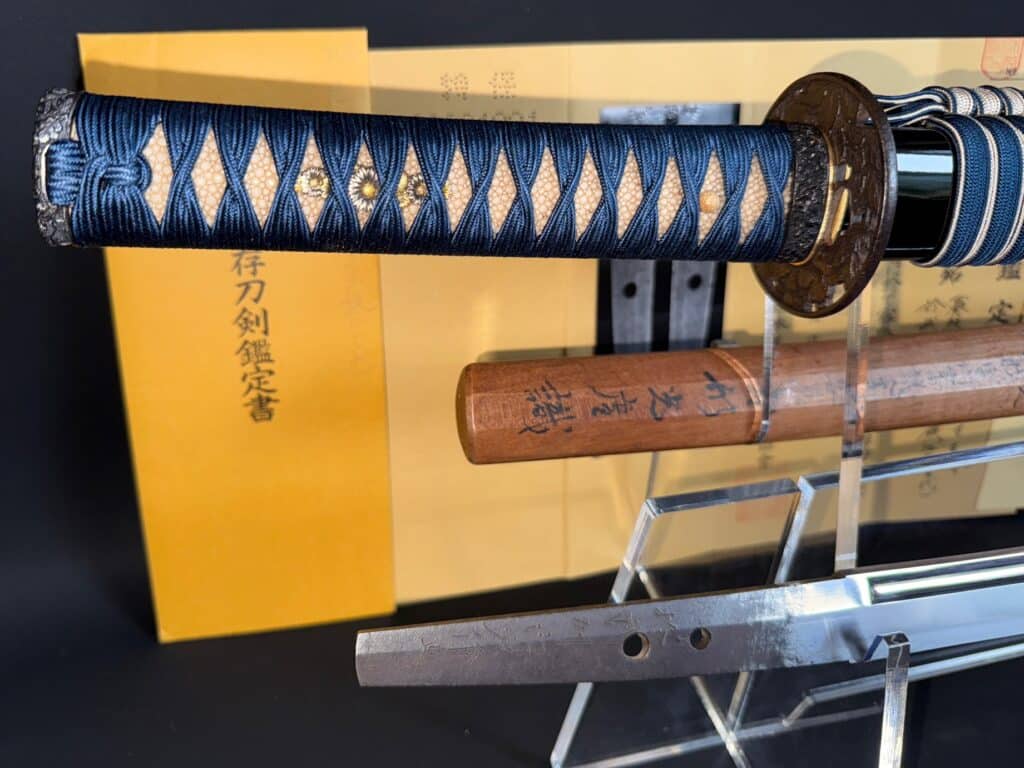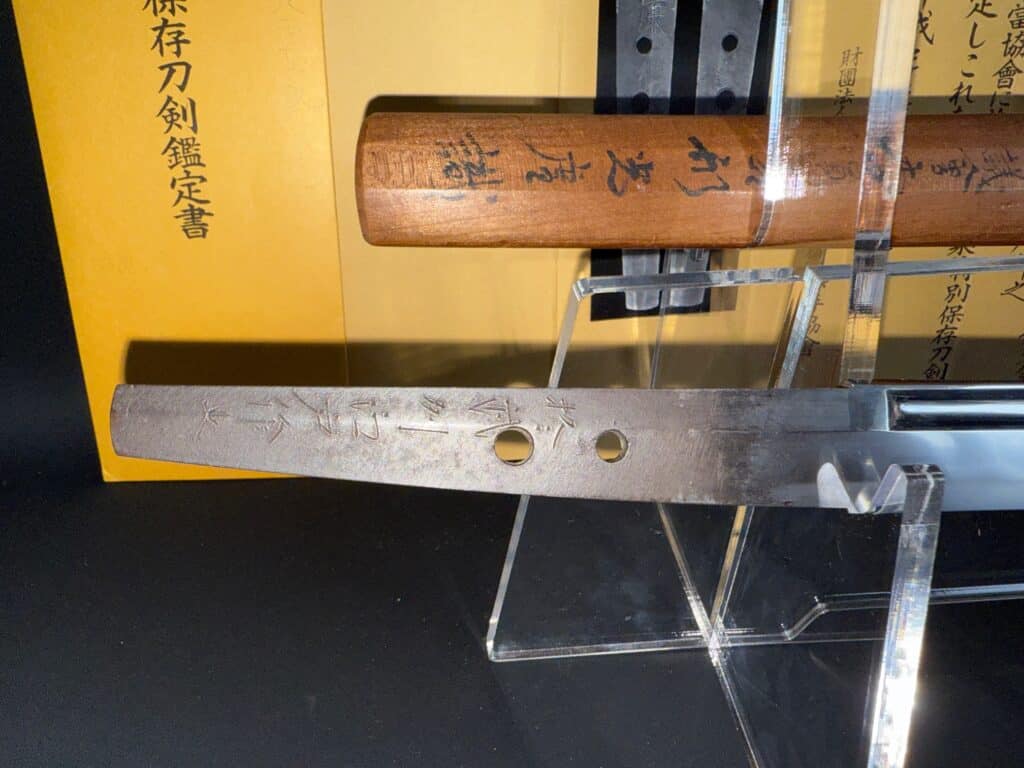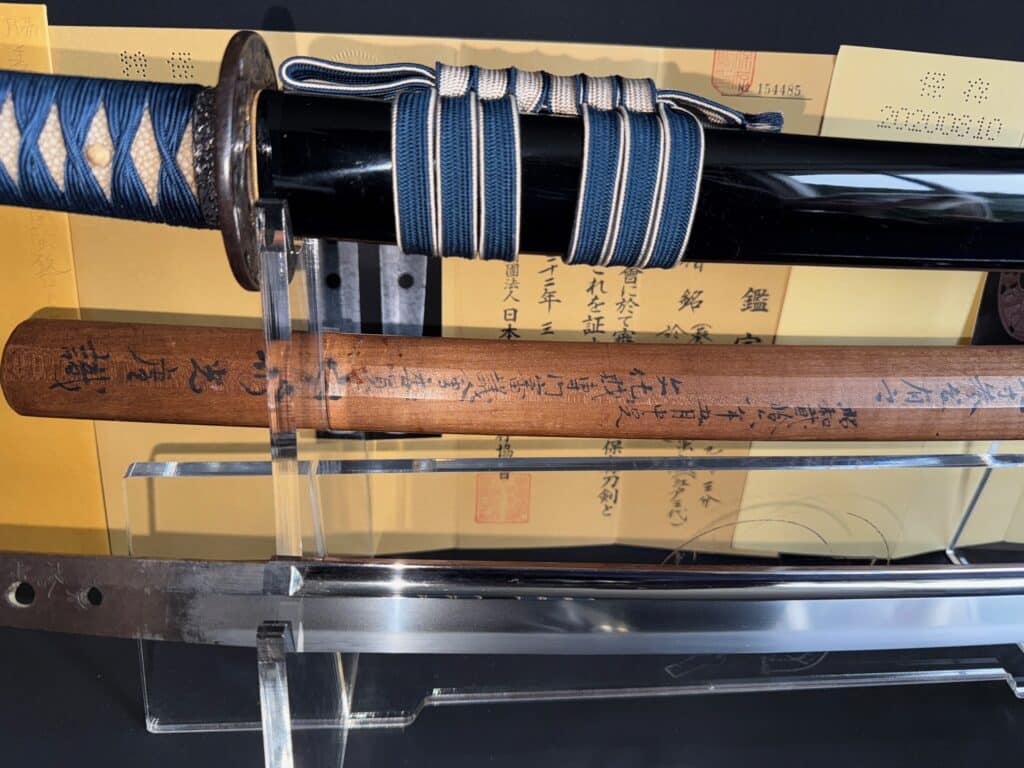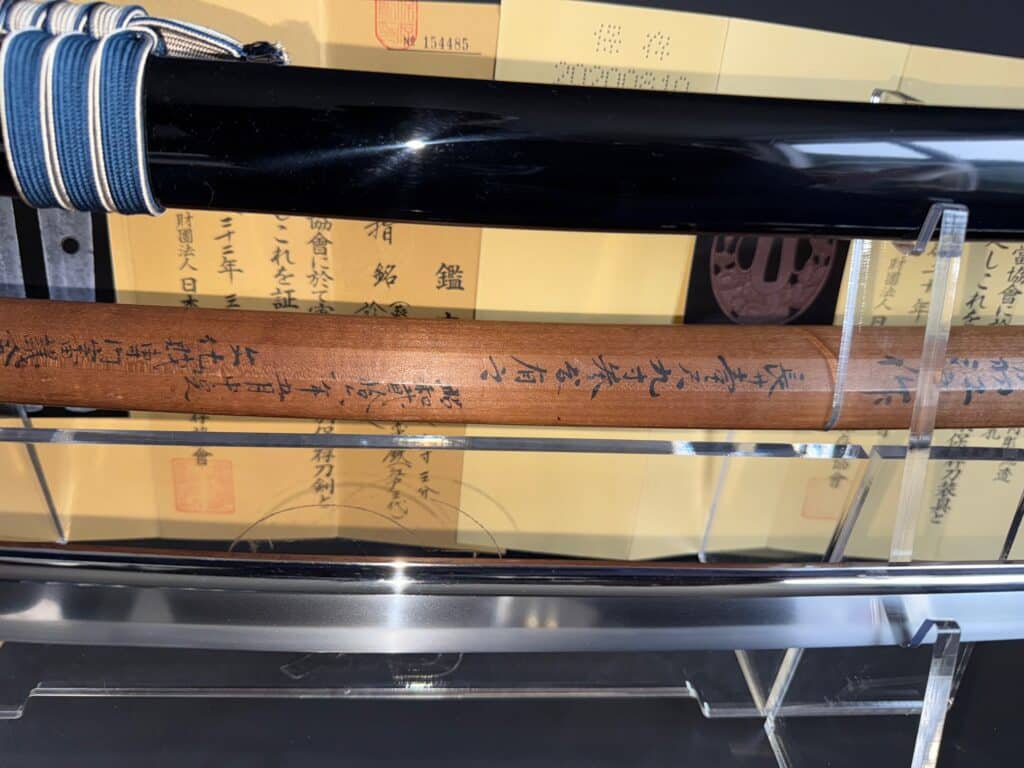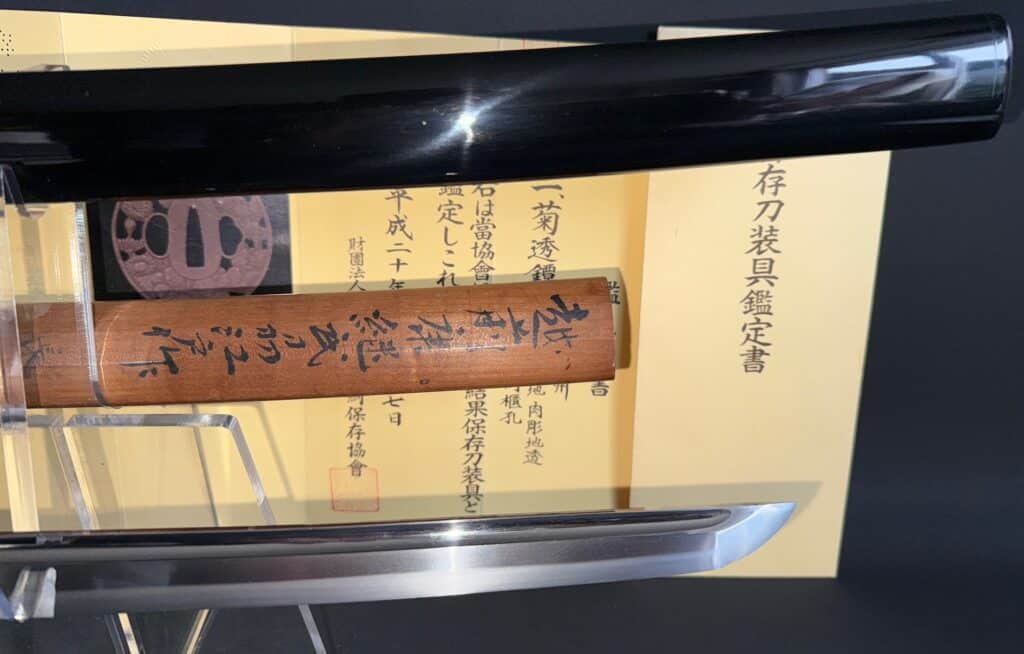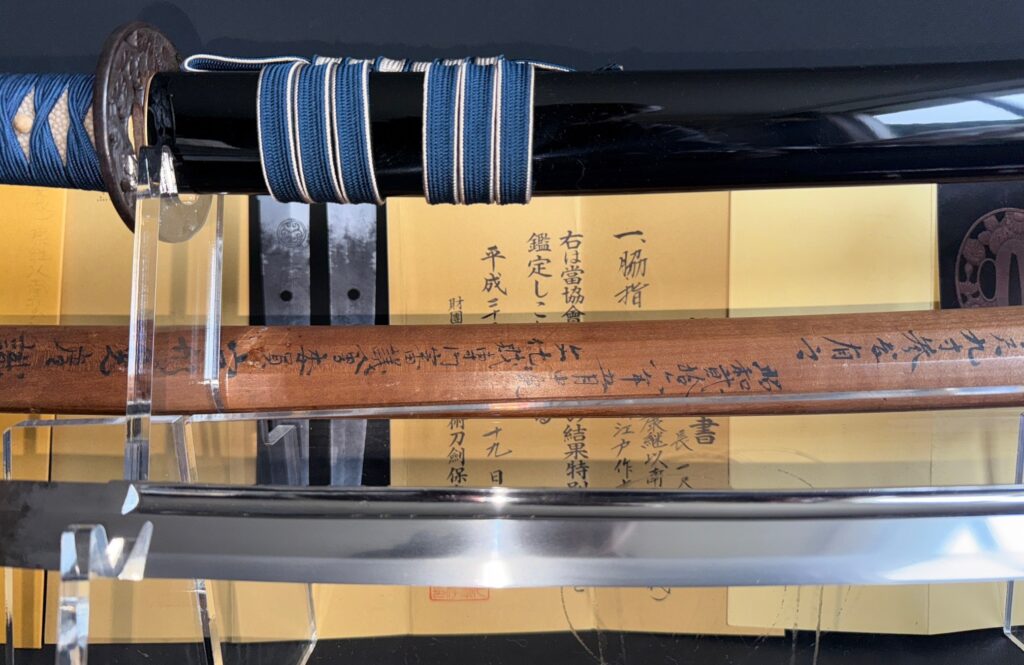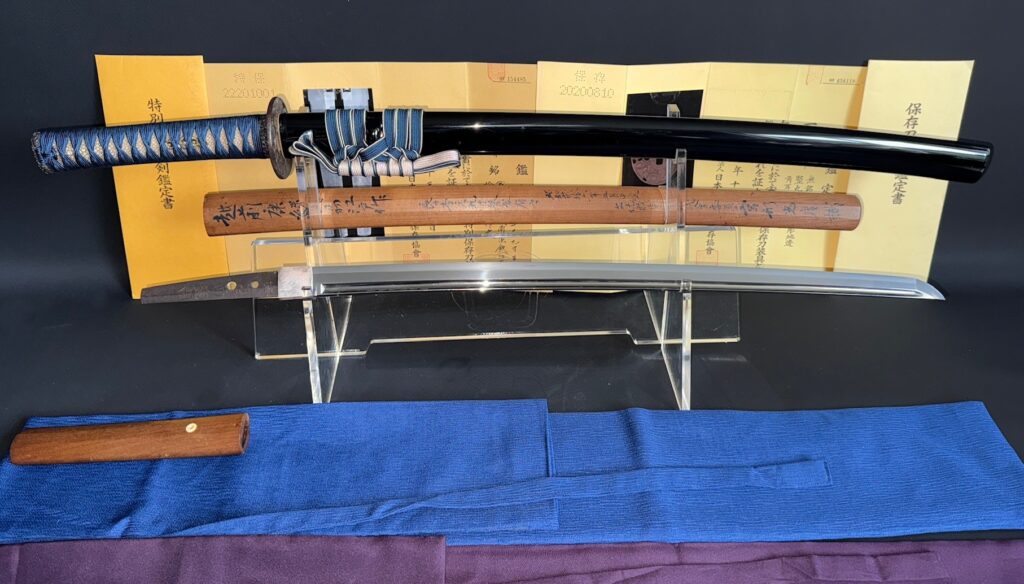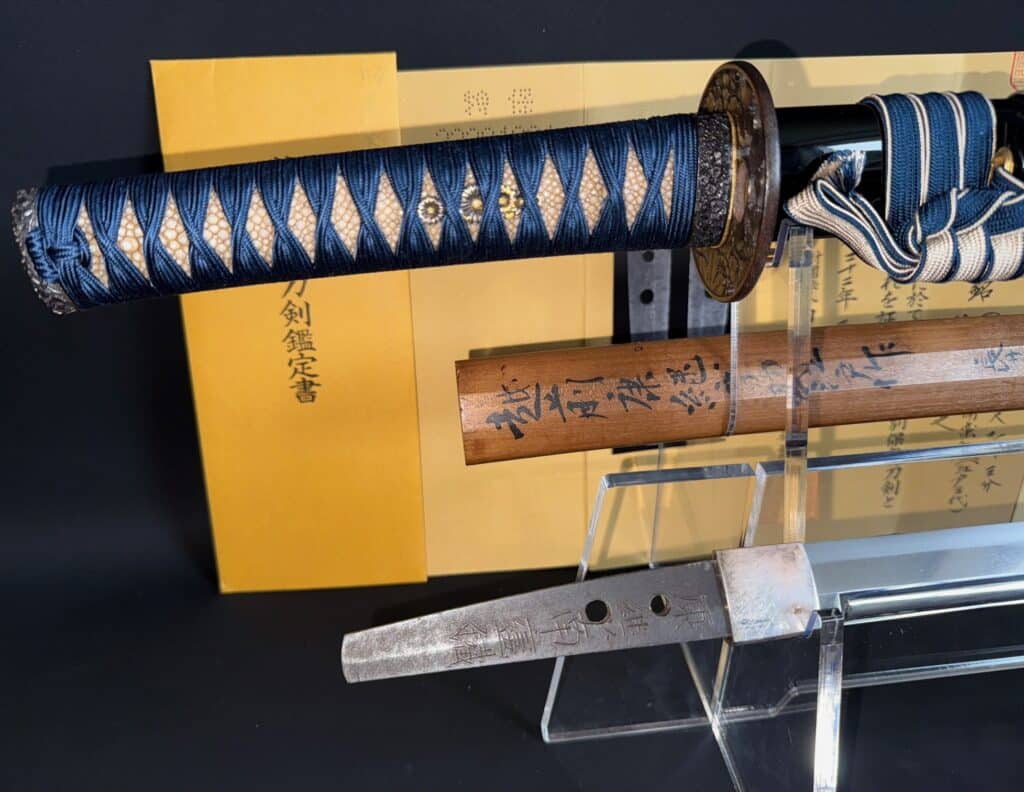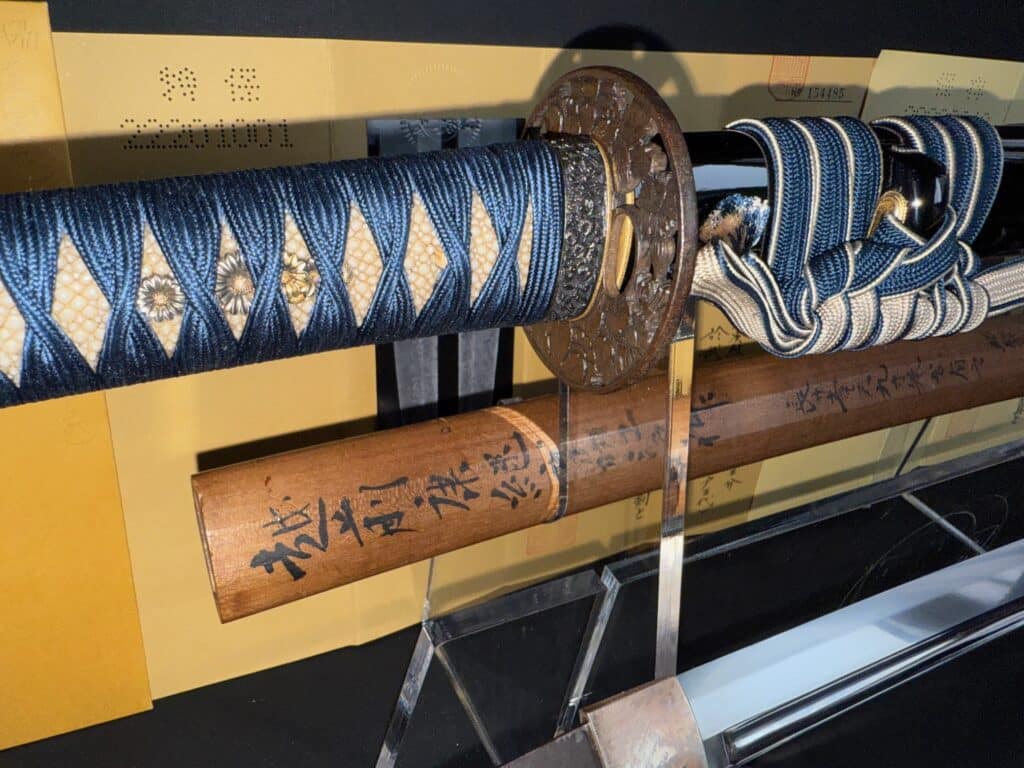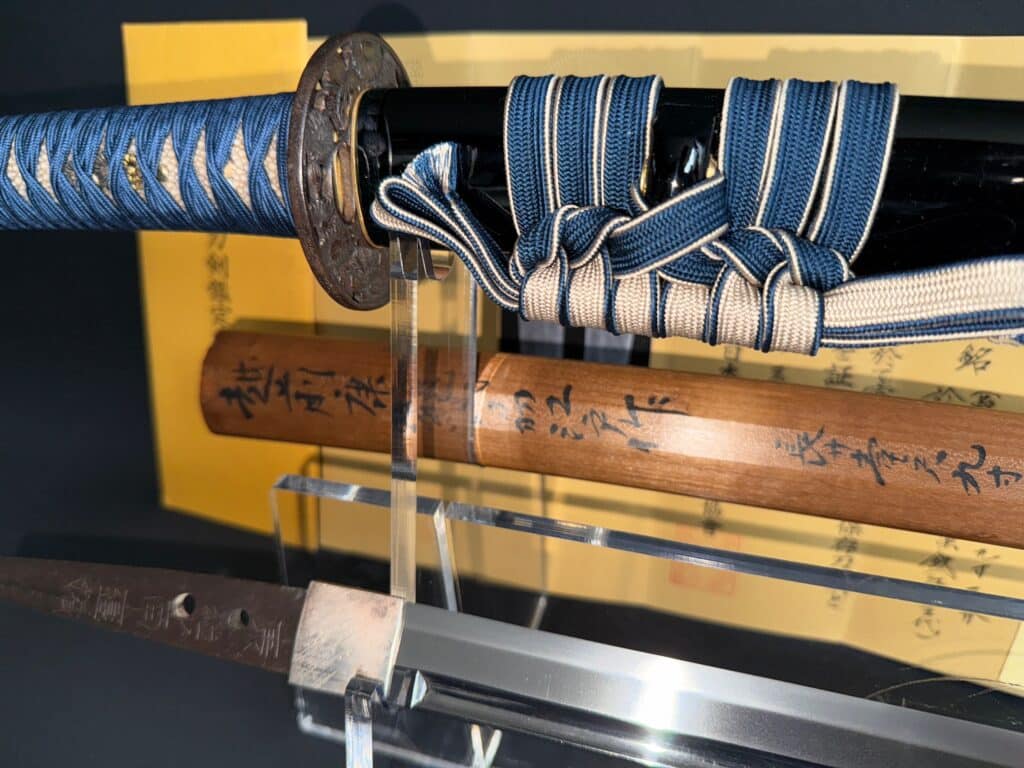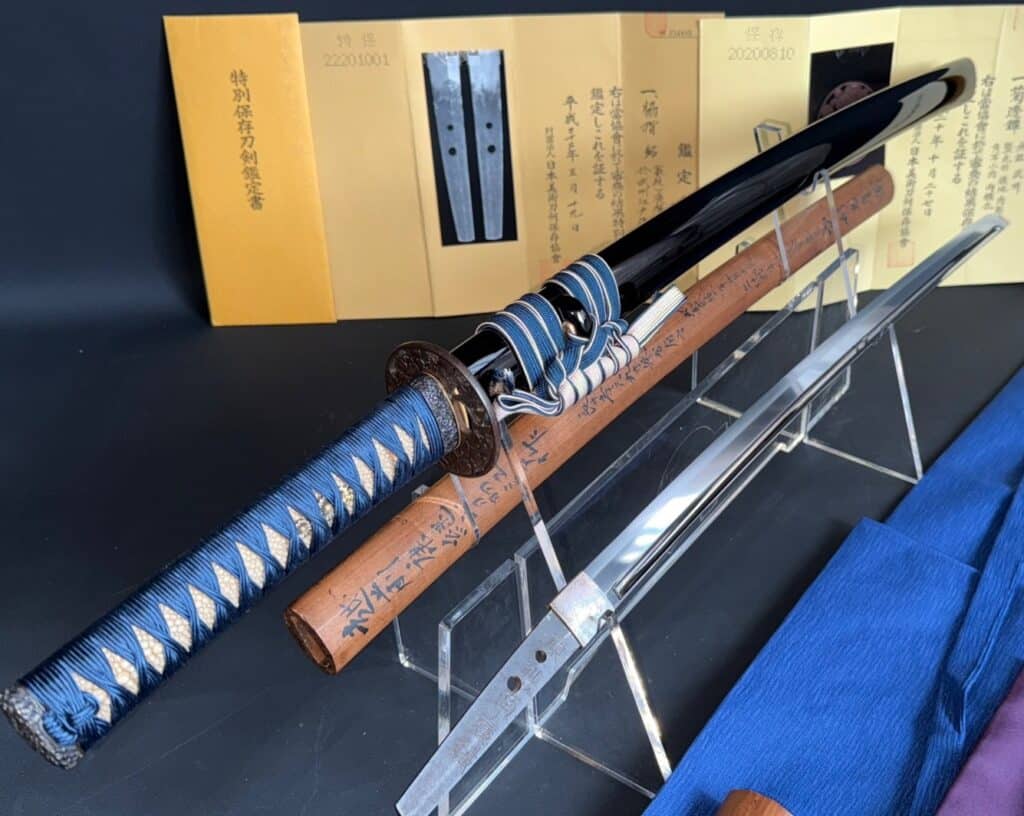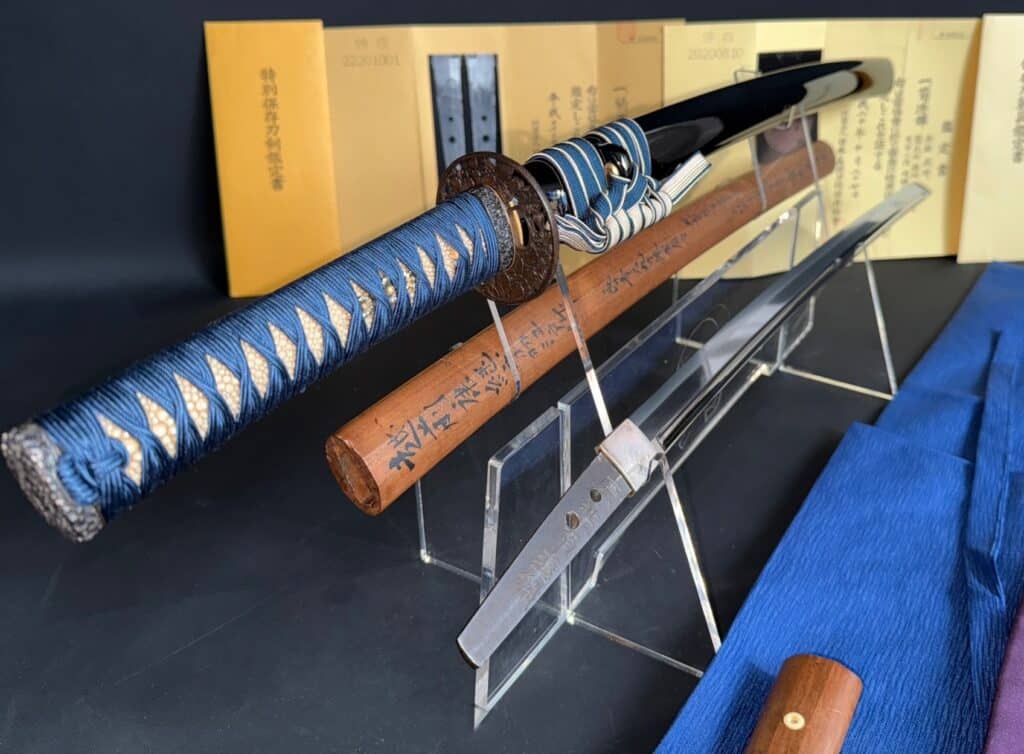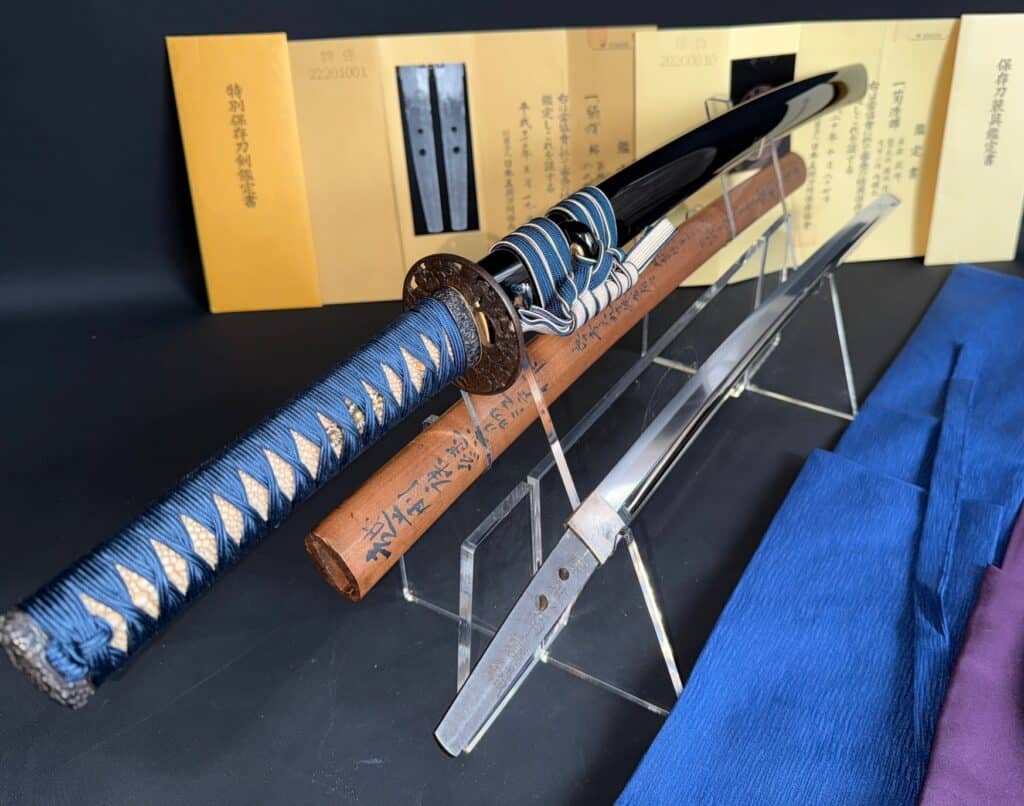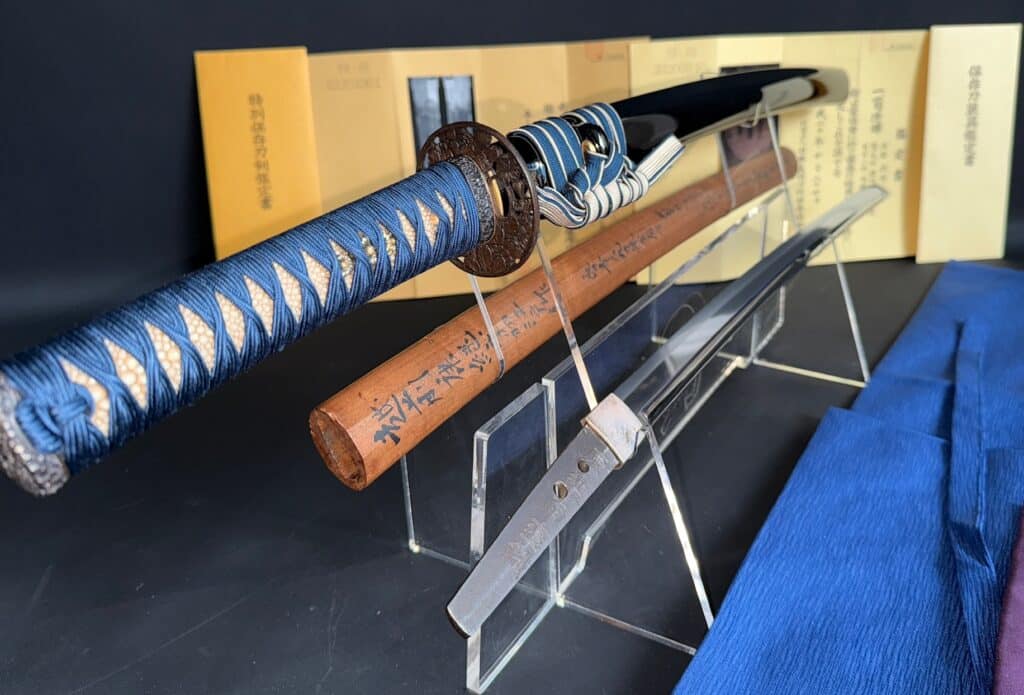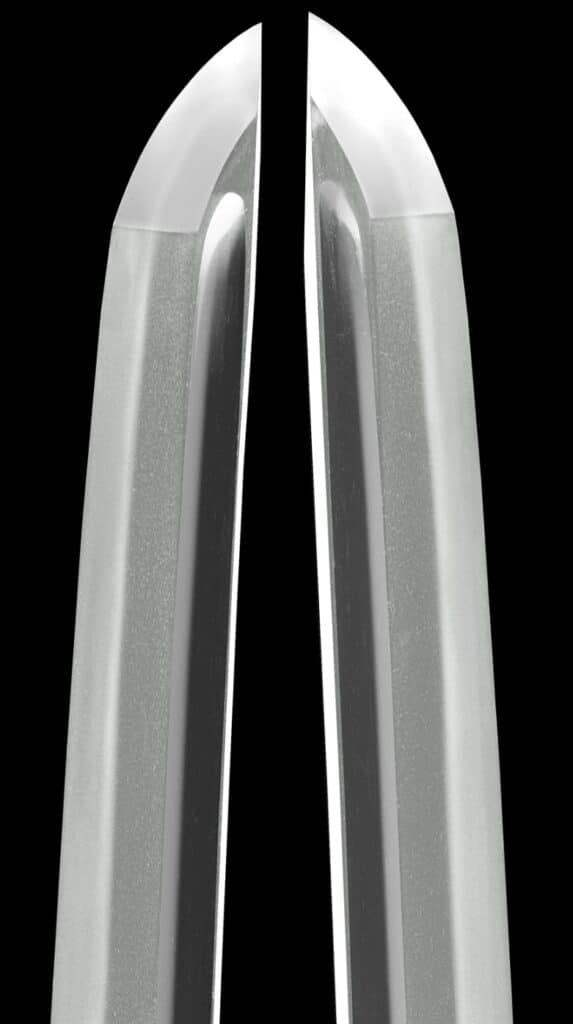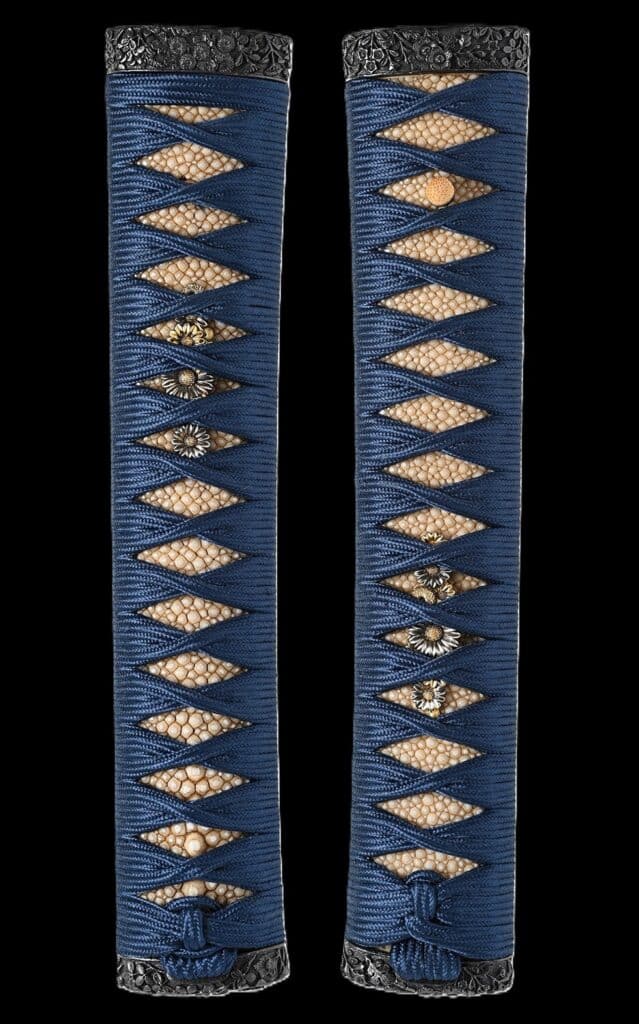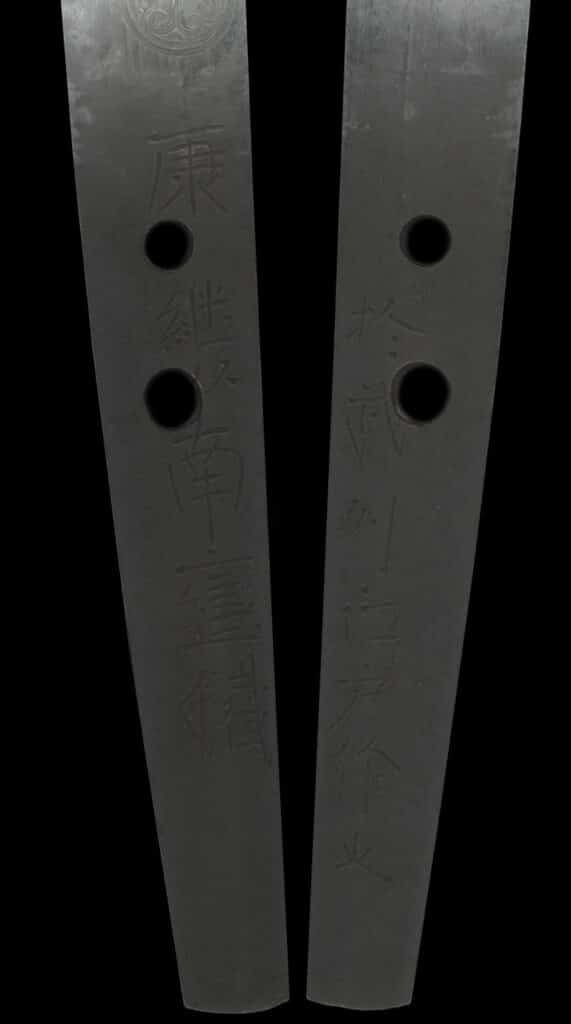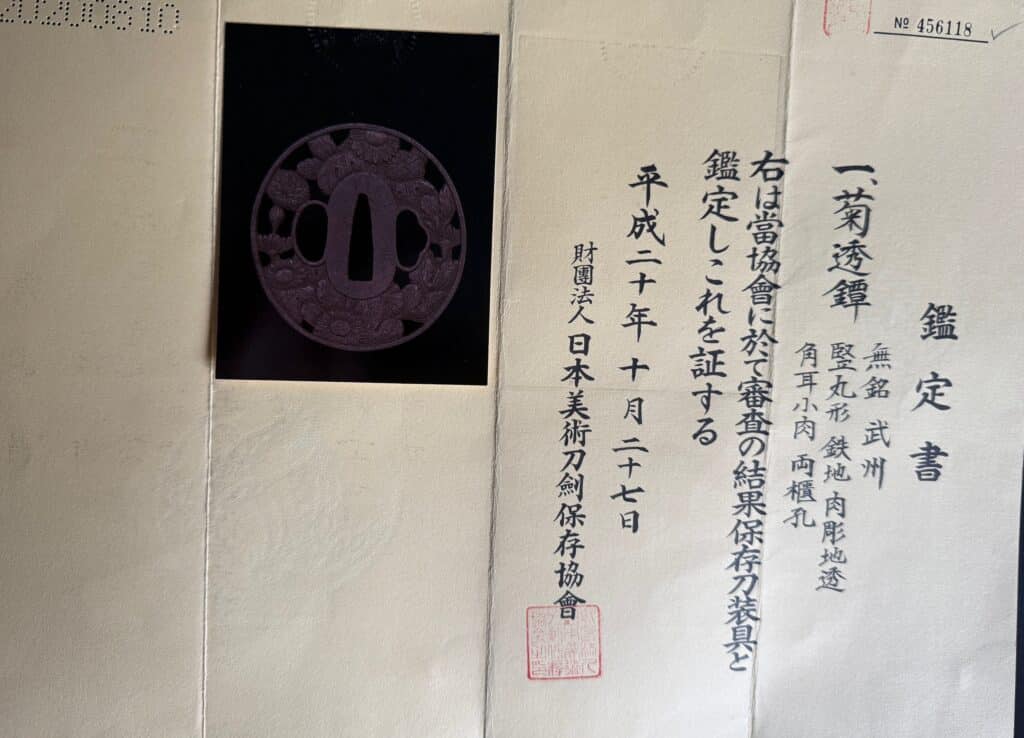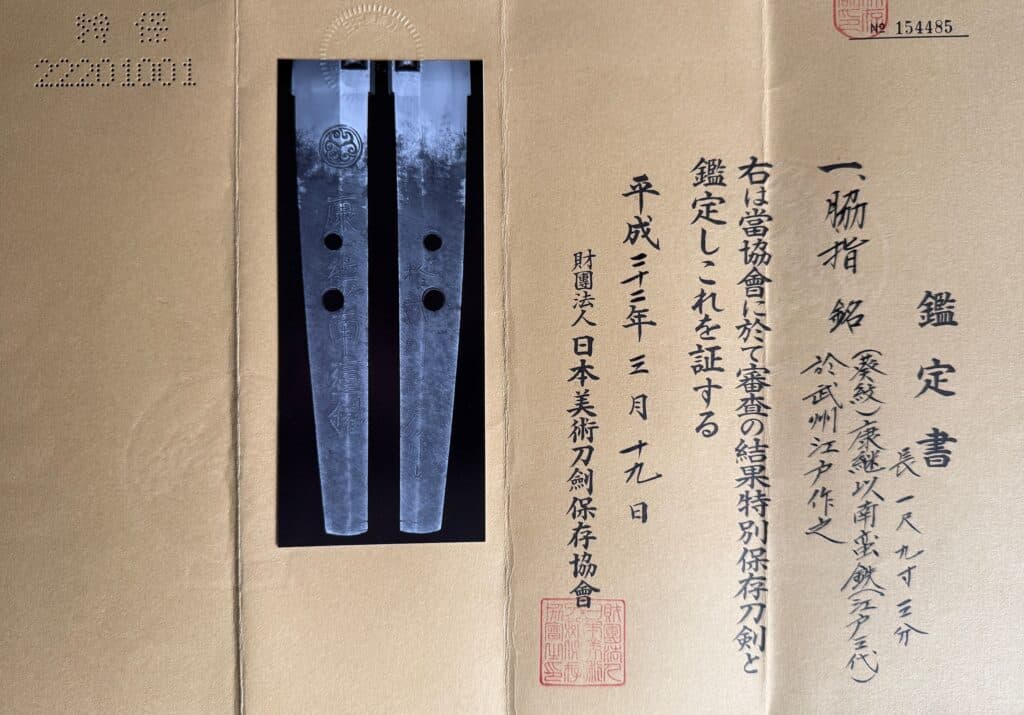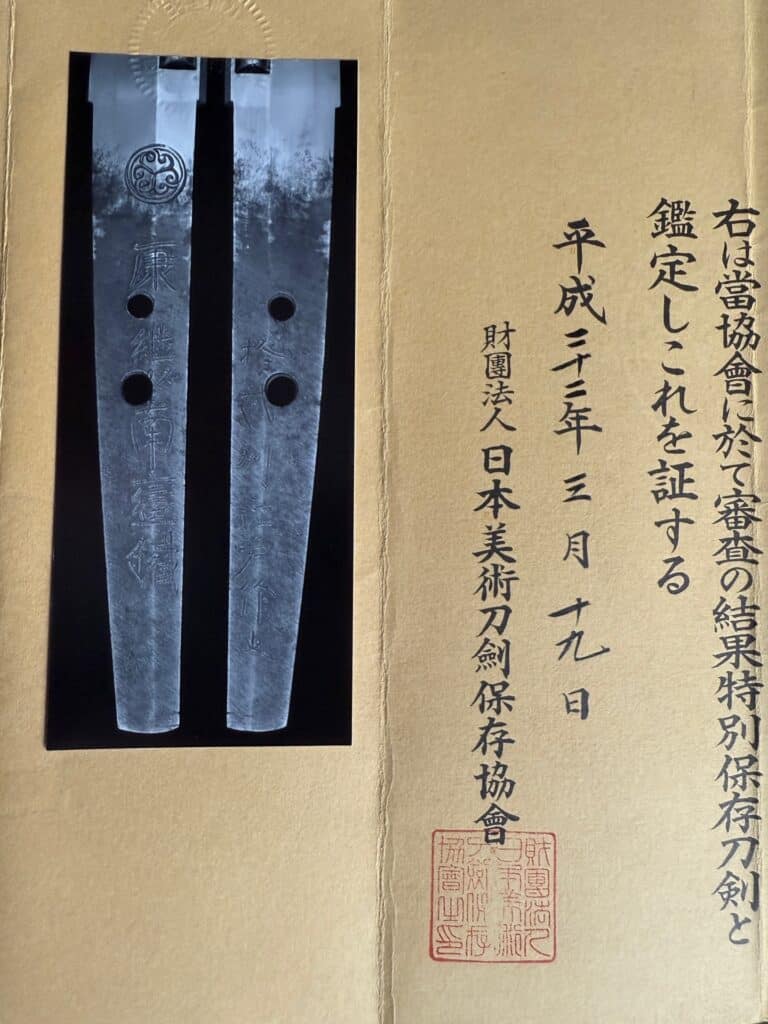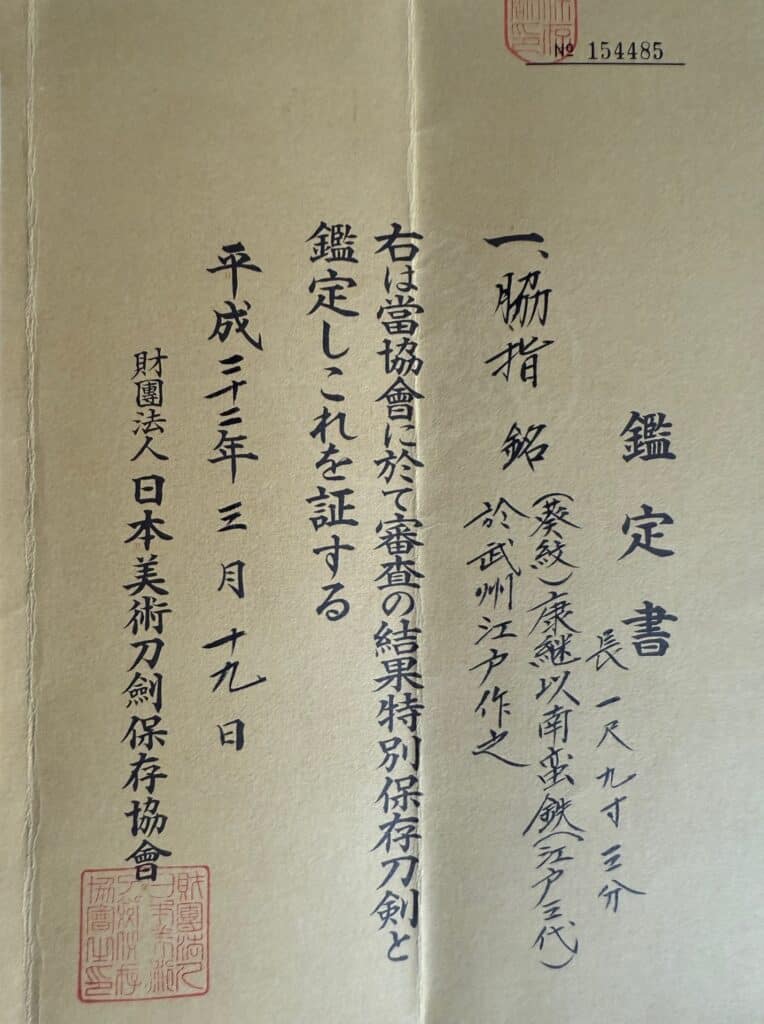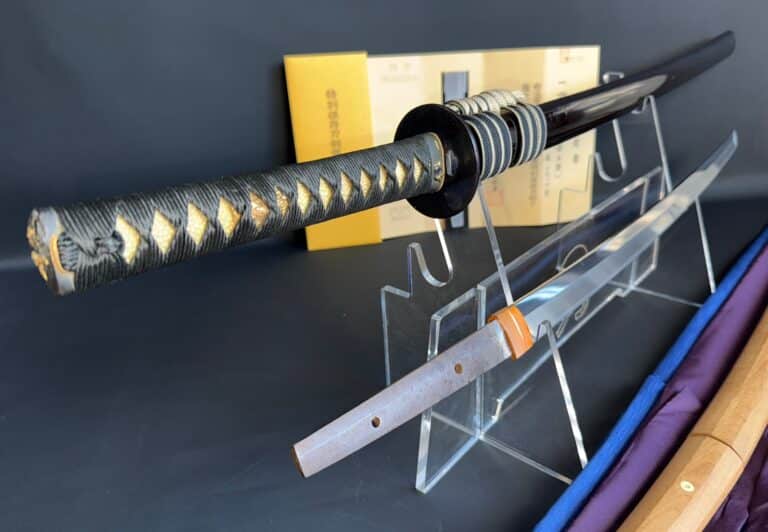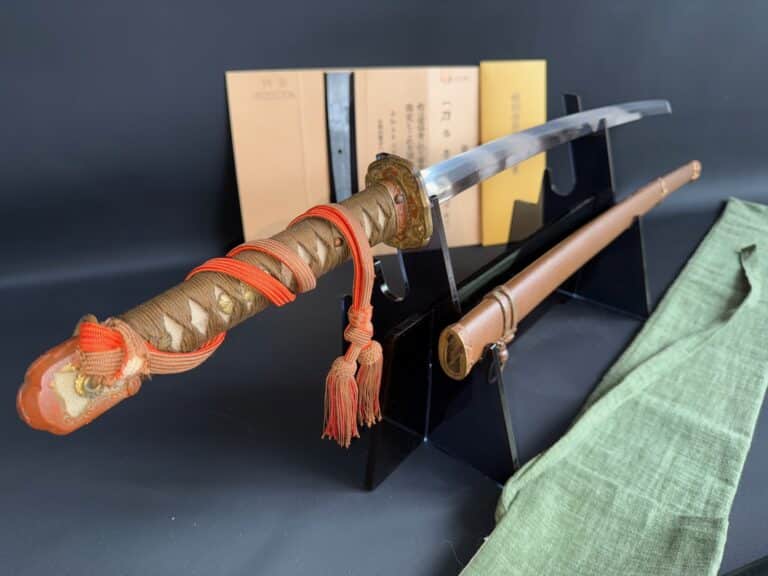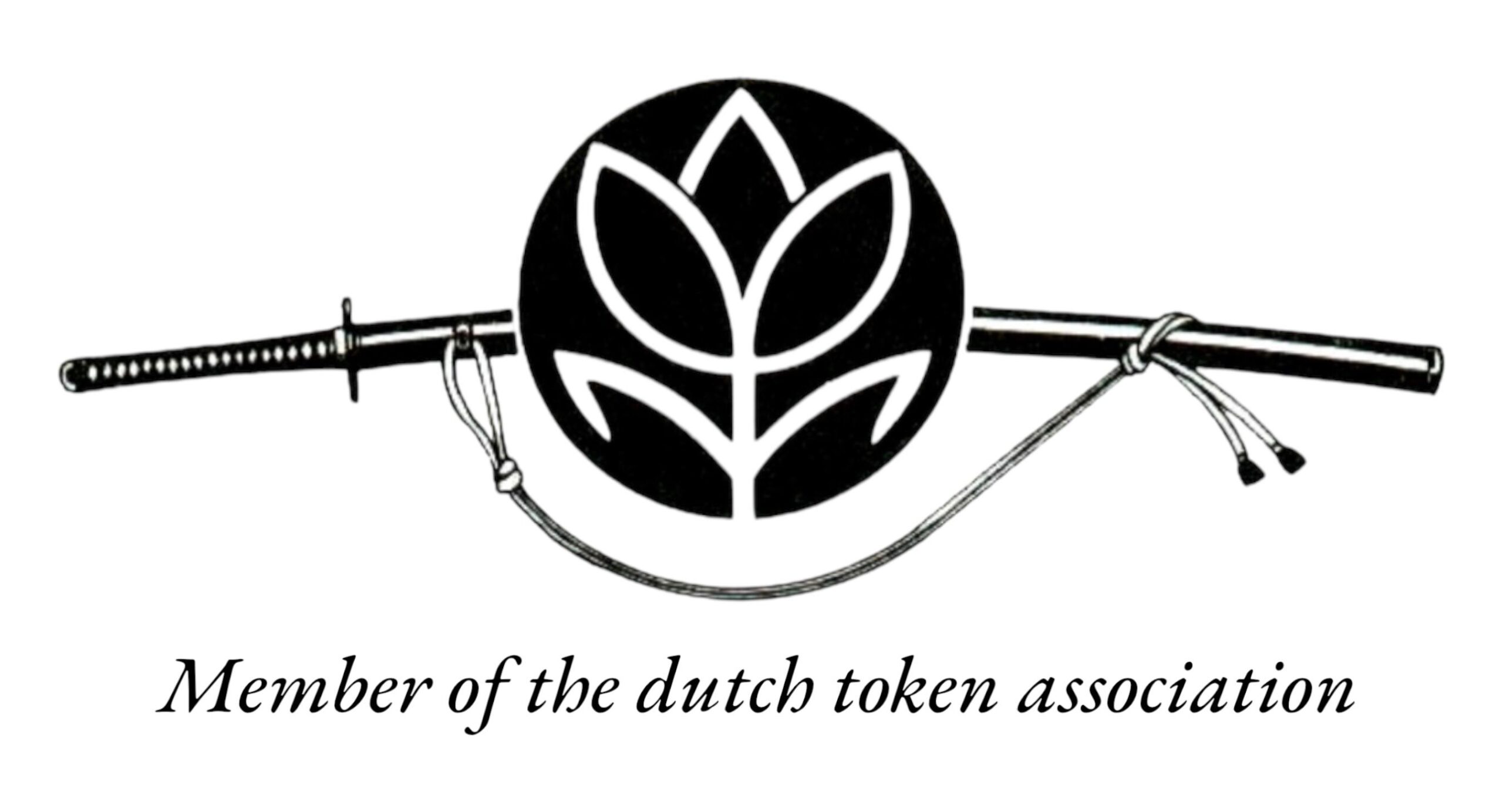Description
A high-quality Japanese Wakizashi , crafted by Aoi-kam Echizen-Yasutsugu , a renowned swordsmith from the Edo period.
The blade is a Shintou jou-saku wakizashi, a type of sword that represents superior craftsmanship and artistry.
Here’s a more detailed breakdown of the features and historical context based on the information you provided:Swordsmith: Aoi-kam Yasutsugu (third generation)
Blade Length: 58.5 cm
Sori (Curvature): 0.8 cm
Width at the Hamachi: 2.6 cm
Motoshige Kasane (Thickness at the Base): 5.5 mm
Width at the Kissaki (Tip): 2.0 cm
Saki Kasane (Thickness at the Tip): 4.5 mm
Mekugi-gata: 2 (indicating the use of two pegs for securing the tang in the handle)
Period: Edo period (circa 1661)
Region: Musashi Province (modern-day Tokyo and Saitama)
Certification:
NBTHK Tokubetsu Hozon: This indicates that the sword has been recognized and preserved by the National Bureau of Authenticated and Preserved Swords (NBTHK), an organization that certifies historical swords , Tsuba Bushu Oimatsu Sukashi Design Mid-Edo Period NBTHK Hozon paper.
The Tokubetsu Hozon certificate is given to swords of exceptional quality, emphasizing that this blade is not only historically significant but also well-preserved.
Historical and Family Context:
The third-generation swordsmith Yasutsugu (also known as Umasuke), born as the son of the second-generation Yasutsugu, continued a legacy of swordmaking in Edo. His father passed away when he was very young (around 17), and there was significant debate over his succession. Ultimately, Umasuke inherited the title of Yasutsugu, while his uncle Shirouemon took on the leadership of the Echizen Yasutsugu family.
The swordsmithing lineage of the Shimosaka family split into two branches: the Edo branch, where Yasutsugu III worked, and the Echizen branch. Both lines were renowned for their fine craftsmanship during the Edo period. The Echizen and Musashi regions were historically important swordmaking centers, producing many blades of excellent quality, both for samurai and for collectors.
Blade Characteristics and Features:
This wakizashi blade, a Shintou jou-saku, indicates it is a high-grade sword produced during the Shinto period of swordmaking (roughly 1596–1780). During this time, the craftsmanship reached a peak with more attention paid to the quality of materials, design, and functionality.
The sori (curvature) of 0.8 cm is typical for a well-balanced blade that would be both effective in combat and aesthetically pleasing.
The kasane measurements (thickness at the base and tip) suggest a robust blade with a slight tapering towards the tip, which would enhance its cutting ability.
The fact that it has two mekugi-gata suggests a traditional construction, providing stability and security for the tang inside the handle.
Preservation and Value:
The NBTHK Tokubetsu Hozon certification adds immense value to this wakizashi. A Tokubetsu Hozon sword is considered to be a “specially preserved” sword, meaning it has not only been authenticated but also preserved in excellent condition, often making it a valuable piece for collectors, museums, or historians.

